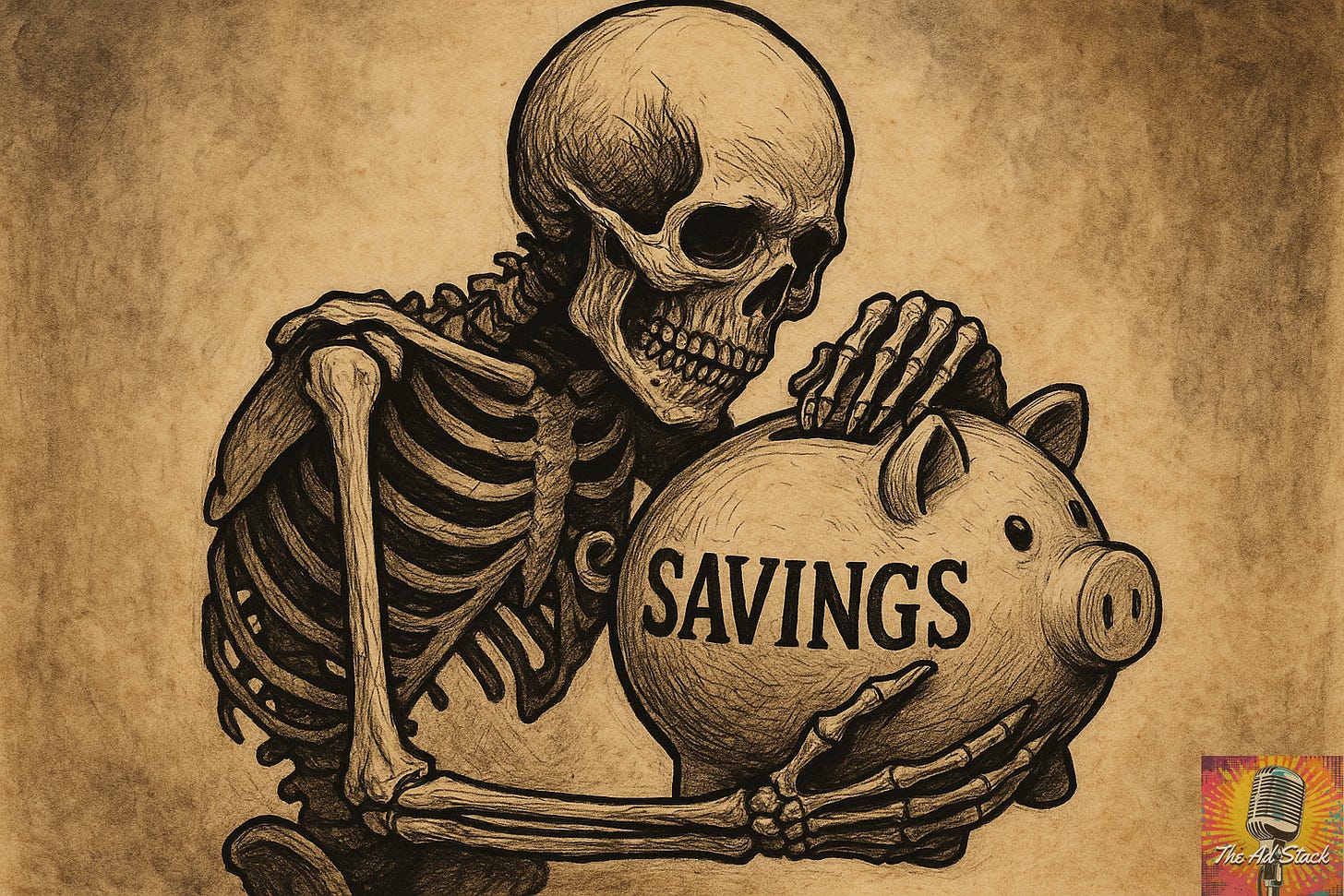Last week’s edition generated some lively responses. I usually have a rather positive outlook on the whole AI thing because, well, what choice do we have? I say push forward, learn more, and hope for the best. That said, here’s another reality helping …
Runway Introduces “Act Two” – but not for you, yet.
“Our next-generation motion capture model with major improvements in generation quality and support for head, face, body and hand tracking. Act-Two only requires a driving performance video and reference character.
Available now to all our Enterprise customers and Creative Partners. Coming soon to everyone.”
July 15, 2025 – Runway on LinkedIn
Mira Murati’s AI startup Thinking Machines Labs confirms $2 billion fundraise
Led by a16z & participation from Nvidia, Accel, ServiceNow, Cisco, AMD, others
The startup’s first product is coming out in the next couple of months. Will include a significant open source component and be useful for researchers and startups developing custom AI models.
July 15, 2025 – Vikas SNVikas SN • Tech Reporter at Moneycontrol
Related – The Verge: Meta held talks to buy Thinking Machines, Perplexity, and Safe Superintelligence
June 20, 2025 – The Verge
50% of US Advertisers Now Use Generative AI for Video
Half of U.S. ad buyers today use generative AI for video content, with 39% expecting widespread use next year. Video is morphing into algorithmic ad farms—fast, cheap, faceless. Brands chase scale, but audiences notice “samey” tone, emotionless messaging, and swapped authenticity. The future of video marketing may very well look like a scripted AI reel.
July 15, 2025 – Videoweek
1. AI Has Put Your Production Budget on a Crash Diet.
$2,000 to whip up a 30‑second NBA Finals spot!
July 15, 2025 – Ad Age – How eToro invested in AI and Veo 3 ads—what brands can learn about advertising’s future
Plus: The Verge, New York Post, Adobe, LinkedIn, Loop Media, Medium, Reddit, Business Insider
AI has taken your budget, put it on a crash diet, and still expects the couture fit. In 2025, brands from fintech darlings to chicken‑wrap pushers are bragging that their slickest TV spots now cost less than a catered brainstorm—thanks to text‑to‑video engines like Google’s Veo 3 and Amazon’s free generator.
Ads that once devoured six figures and six weeks are now popping out of GPUs in a long lunch break, slicing production bills by up to 95 percent and leaving human crews staring at their unused gaffer tape. Below, a tongue‑in‑cheek tour of the “savings” revolution that’s equal parts miracle cure and miracle‑whip.
eToro’s new “eToro is Everywhere” spot (mentioned in last week’s headlines) features traders scuba‑diving with sharks, goat‑pose yogis, and a poolside smartphone bull market; every frame conjured by Veo 3, no snorkel rentals required.
The fintech’s in‑house content team says AI lets them crank ads in six languages and cut their cost‑per‑concept in half , while its overall marketing budget still ballooned to $61 million because, hey, savings are addictive.
Kalshi, meanwhile, paid an “AI filmmaker” $2,000 to whip up a 30‑second NBA Finals spot; 95 percent cheaper than a traditional shoot and delivered in two days, fewer than the setup time for a single dolly track.
DesignRush* calculated that the typical $250‑$500 K national TV budget evaporated faster than a pop‑up blocker.
-
DesignRush is a U.S.–based B2B marketplace that lists, ranks, and reviews thousands of agencies so brands can comparison‑shop for everything from web design to PR.
Secret Level’s Jason Zada claims you can swap one helicopter‑shot commercial for three Veo 3 fever dreams and still have cash left for oat‑milk lattes.
Adobe backs him up: its GenStudio dashboard promises double‑digit ROI upticks by letting marketers “resize, re‑voice, and re‑skin” ads in seconds, finally turning the creative department into a glorified vending machine.
Morgan Stanley thinks Hollywood’s newest script doctor is also a bookkeeper: Amazon could shave 10 percent off a $24 billion Prime Video budget just by pumping more shows through AI tooling. That’s enough loose change to buy a few extra Thursday Night Football games—because live sports remain the one genre no one wants rendered in Midjourney (yet).
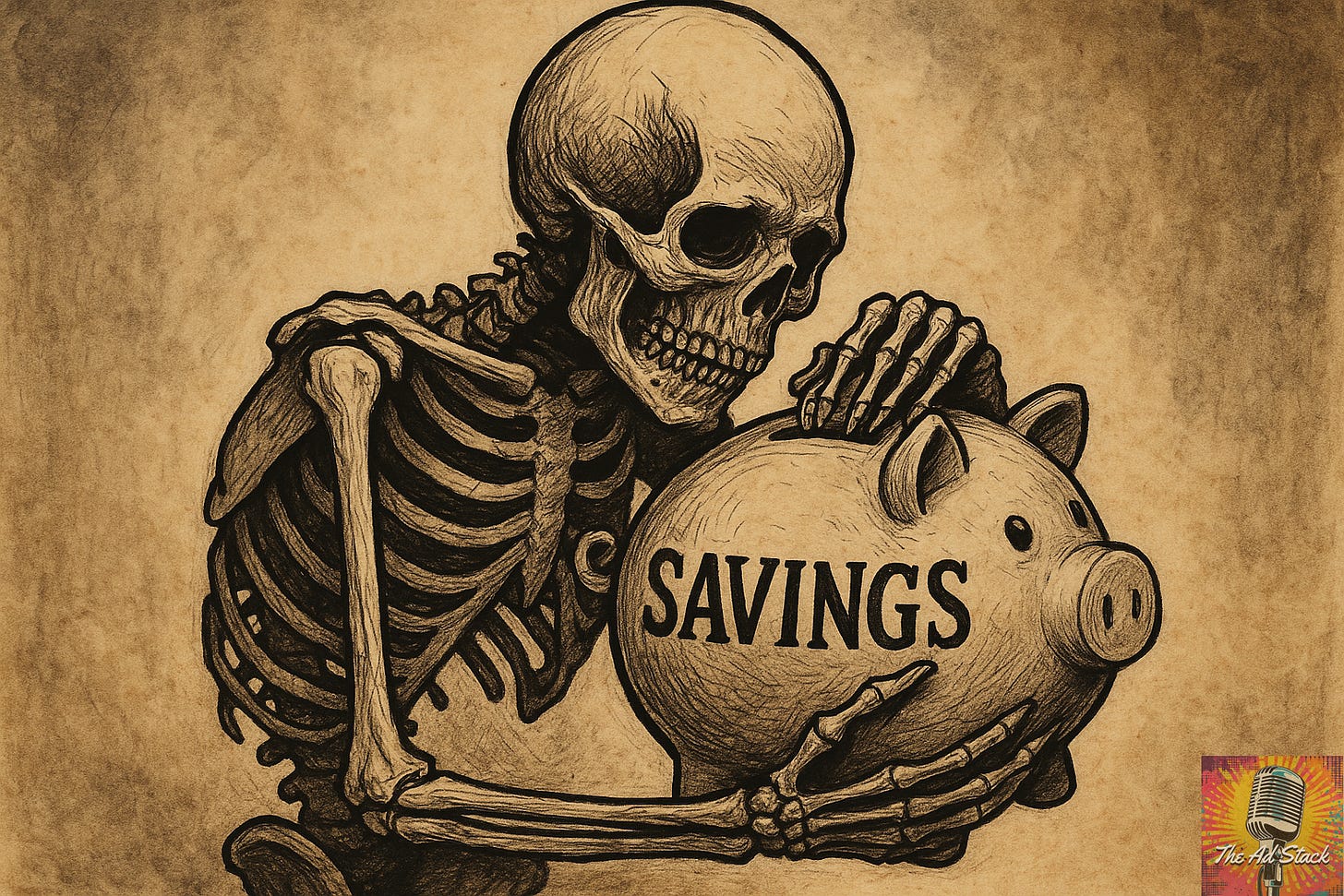
-
Critics coin terms like “AI slop” to describe spots where smiles loop and limbs ignore gravity, but hey, the production invoice is down to pocket lint.
-
Coca‑Cola learned cheap can look cheap when its uncanny Christmas ad got roasted as a “dystopian nightmare.” – New York Post
-
Reddit threads of aspiring actors now read like Craigslist obituaries: “Another AI ad just stole my rent check!”
AI may slash crew and location costs, but new expenses sneak in:
-
GPU Tax: Hundreds of text‑to‑video generations rack up cloud compute fees faster than a DIT marking takes. One Kalshi spot required 300‑400 iterations to find 15 usable clips.
-
Prompt Engineers: Those “free” ads still need prompt whisperers who charge like union grips.
-
Brand‑Safety Auditors: DoubleVerify now sells deep‑fake detection to ensure your goat‑yoga guru isn’t also a lawsuit.
Medium’s ad‑tech essayists warn that ROI calculations rarely count the carbon footprint of massive GPU farms, so you might save cash but melt glaciers.
Tatari’s data shows AI spots can cut TV acquisition costs 39 percent for scrappy brands like BlueChew, proving that even erectile‑pill marketers can afford Marvel‑level VFX, because nothing says romance like procedural lip‑sync.
Loop Media estimates the entire AI‑video sector will rocket past $7 billion by 2029 on a 21 percent CAGR (Compound Annual Growth Rate). Then everyone piles into the same templates, and “differentiation” begins to rhyme with “drum solo bio break.”
Generative AI can slash production costs up to 95 percent and double creative throughput, according to bullish case studies from Veo 3 producers and Adobe dashboards.
Yet every penny saved steals a pixel of originality; ad feeds risk becoming an infinite scroll of mid‑priced déjà vu. Brands drunk on low costs may wake up in a content hangover where audiences can’t distinguish eToro’s goat yogi from a Popeyes chicken wrap rave; both shot in the same uncanny valley.

AI commercials are the cheapest Lamborghini you’ll ever lease—flashy, fast, and guaranteed to depreciate the second every competitor rolls out with the identical paint job. Enjoy the deal, but remember: when everyone’s creative budget is pennies, attention becomes the only currency left—and the algorithm raises its rents tomorrow.
Sources: Ad Age, The Verge, New York Post, Adobe, LinkedIn, Loop Media, Medium, Reddit, Business Insider
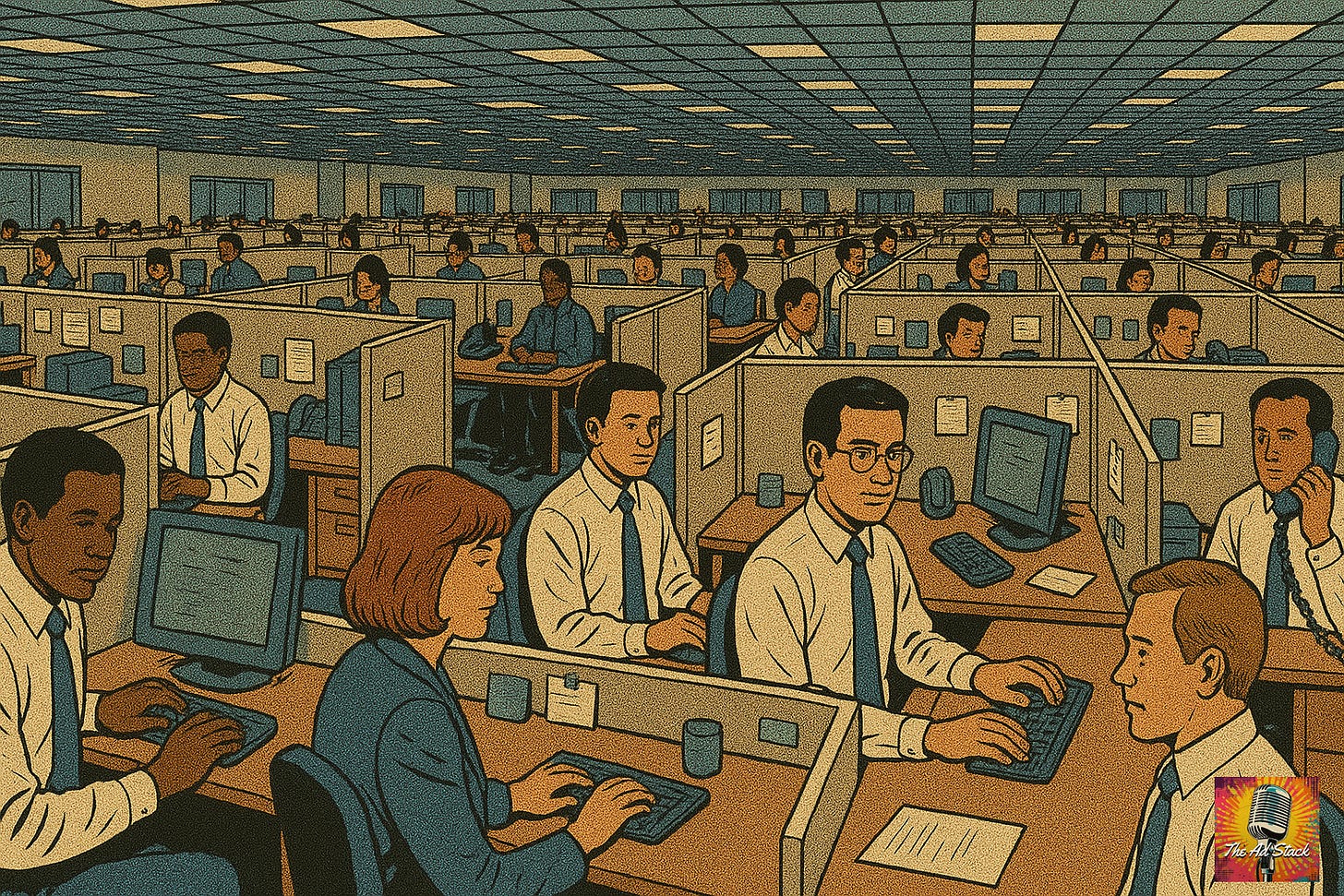
“I overheard a conversation between my manager and the head of HR, who said, “It’s been awfully hard to find candidates who are the right culture fit for our company”. To be honest, I have no idea what that’s supposed to mean because I’m in the company and I couldn’t tell what our ‘culture’ is. There is no culture apart from everyone bringing themselves to work at 9, doing their work, and leaving by or before 5. How hard is it to find people who can do that?? Am I missing something here?”
““What a handsome young man.” — never thought I’d hear those words in today’s office setting.”
He isn’t wrong. Just because you think you know what you’re doing doesn’t mean you do. Not always the case but I understand his thought process.”

Nvidia, now flirting with a $4 trillion market cap, couldn’t resist stepping into the ring. Huang told Axios, “There will be more jobs,” comparing AI’s impact to mechanization in farming. Productive, not destructive.
Across the aisle, Amodei of Anthropic painted a bleaker picture: up to half of entry‑level white‑collar jobs could vanish, turbocharging unemployment to 10–20% in the next five years.
Behind the rhetoric, corporate America is quietly pruning headcount. Microsoft cut 6,000 roles in May and another 9,100 in July, nearly 4% of its global workforce, to reallocate funds toward AI infrastructure, saving over $500 million in customer‑service costs alone.
Walmart, too, eliminated 1,500 corporate positions, citing a “technology inflection point” where algorithms now outpace human analysts.
Salesforce, Amazon, and Google have all joined the downsizing spree, unleashing automated “agents” to handle tasks once reserved for interns and junior staff.
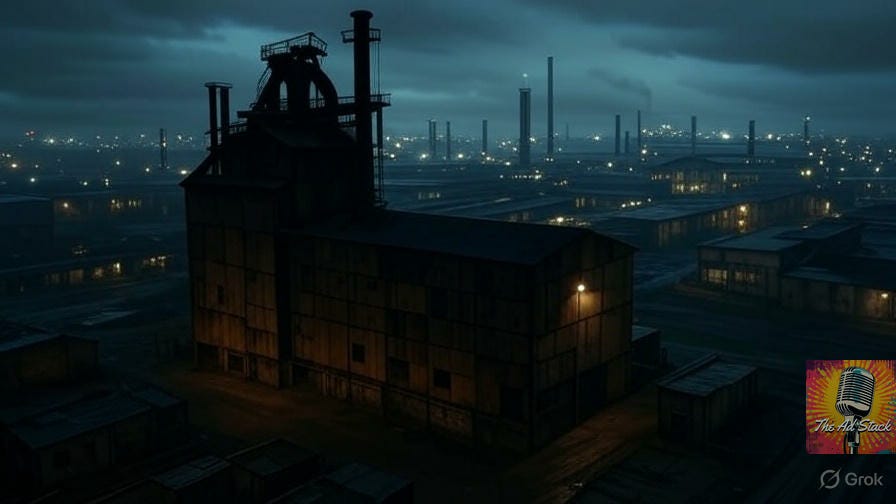
Huang insists we’re entering an “industrial reset” akin to steam or electricity, but unfolding in months, not decades. Yet history’s optimism offers scant comfort when AI tools already write code, draft legal briefs (which are sometimes in error and may not be covered by malpractice insurance), and design ad campaigns at machine speed (creativity’s race to the bottom).
As for retraining programs and universal basic income talks, those are still stalled in policy labs while millions face an uncertain desk‑to‑machine trajectory.
Meanwhile, Nvidia’s stock surge has made Huang one of the world’s richest people. His net worth ballooned to about $144 billion as investors scooped up shares on hype around H100 and H20 GPUs . This concentration of wealth underscores where the spoils flow: to chipmakers and cloud‑service giants, not to displaced paralegals or junior analysts.
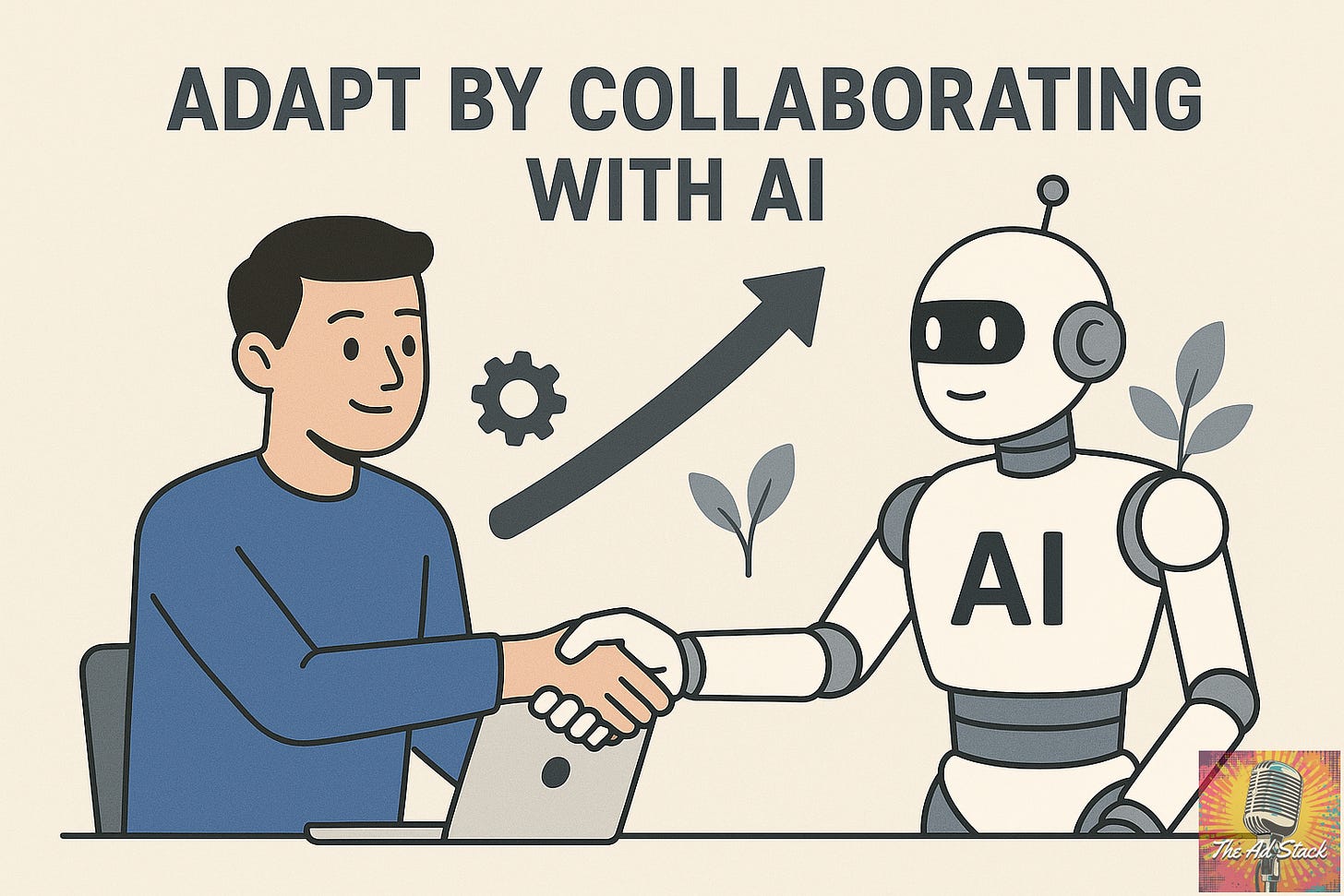
Huang urges workers to “adapt by collaborating with AI,” learning prompt‑engineering and data‑center ops. Amodei counters that without robust public policy, job‑loss taxes, retraining grants, transparent displacement tracking, we’re sleepwalking into a “white‑collar bloodbath.”
So, where does that leave us? You can buy into Huang’s vision: upgrade your LinkedIn with “AI‑enhanced” buzzwords, or echo Amodei’s alarm: prepare for a world where your next performance review might replace you with a script.
Why do we fear the AI apocalypse? Because for once, the machines might actually read all our terms and conditions, and find us guilty.
Buckle up. The AI train isn’t just arriving at your station. It’s ripping up the tracks behind it.
Sources: Axios, Fox Business, Reuters, ABC7 San Francisco
-
Please forward this to three friends, enemies, colleagues, or someone you met today.
-
Like and Re-stack it below so others can find it!
-
Drop a comment below. If you’re into it, if it sucks … perhaps drop a Haiku about programmatic AI. Your call.
Thanks for the read!
